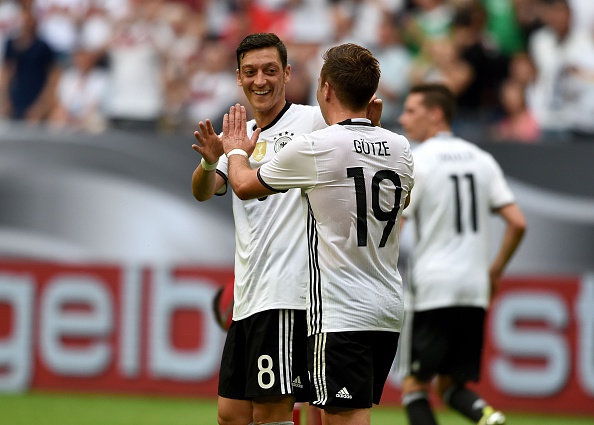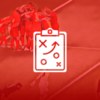Freddy Denis looks at 2 sides of a coin, and explores whether a team of talented individuals is better, or a cohesive unit.

There is little doubt cohesion is a vastly important attribute. One doesn’t need a psychology degree or a coaching medal to know that when a set of individuals are assigned to a common group task (i.e. scoring goals and winning matches), the chances of their output increasing are directly proportional to how well they can gel together. On a very fundamental level, it’s easy to relate to the notion that a united team is invariably a better one.
Many heavily invested into the world of football and its niceties nearly always reach the simple consensus that a football team needs a sense of togetherness to reach a different class. However, most of them tend to leave the chit-chat at that. By paying lip-service attention to this admittedly one-sided discussion, they consider the topic done and dusted and move to analyze more ‘exciting’ ones, like the Messi vs Ronaldo debate.
In many ways, it’s understandable. There’s a tendency to not reach a definitive inference here because by and large, evaluating a team’s cohesion on a metric is impossible. Dynamics like togetherness, team spirit and levels of trust are intangibles. If you’d ask anyone to rate the team morale of Leicester City last season, many would call it “incredibly high,” but not really manage to extrapolate or conclude on that.
Contrastingly, individuals are easier to rank and compare. After watching x amounts of games two footballers have played in, it’s possible to assess how much better (or otherwise) one is to another. Aided by statistics and FIFA ratings, one can beam balance Mesut Ozil’s passing range to Mario Gotze’s, or Jamie Vardy’s workrate to Raheem Sterling’s. The comparison isn’t necessarily always absolute, but is no doubt a whole lot more quantifiable than comparing team morale.

PATRIK STOLLARZ / AFP / Getty Images
And herein lies the bedrock of this article – a debate brought to the fore yet again by the monthly fiestas of international football that grace our televisions every two years. Euro 2016 brought with it a lot of hype, but in terms of attacking play, has deflated revised expectations slightly. Offensive football has not been very good, draws are accumulating and teams look a bit dysfunctional.
Obviously it’s reasonable for international teams to not be on the same wavelengths, because unlike club football, most players from the same country have not played with their teammates that often. The result is a group of talented individuals bunged together and forced to “figure it out,” for lack of a better phrase. Many international teams are formed this way, which makes it no surprise that the importance of cohesion crops up in every international tournament.
This debate, however, is slightly different – in that it doesn’t look at the aforementioned necessity of keeping a team in synthesis. Instead, it examines if the strength of eleven closely knit players can trump the strength of eleven dysfunctional ones, regardless of a player’s quality. To frame it bluntly, is a team of above average best mates better than a team of highly skilled professionals who barely know each other?
There are examples on either ends of this spectrum. Italy, for instance, are quite possibly the best specimen of a team familiar with themselves. Their four-man defence line of Gianluigi Buffon, Andrea Barzagli, Leonardo Bonucci and Giorgio Chiellini have already gotten their chemistry on point from their time at Juventus, which meant that Italy conceded only one goal in the group stages despite operating with three at the back.

VINCENZO PINTO / AFP / Getty Images
They’ve had some problems further forward, but keeping in mind that Italy’s midfield and attack consists of Lazio, Sampdoria and even Southampton players, that’s explicable. Indeed, it only further goes to validate the point that stronger cohesion enhances the efficiency of players.
“Oh, but Barzagli, Bonucci and Chiellini were world class anyway,” you might retort. They are. However, isn’t part of the reason these players have evolved into such magnificent defenders because they have spent so much time together? These guys have had around five years to build a rock-solid defensive spine for Juventus, and not only have they succeeded in doing that, they have also transmitted that solidarity to the Italian national team. It’s the classic ying and yang interdependence angle that has made all three of them one-thirds of a fantastic defensive plan.
Spain, to an extent, have also been conformists to the “team is greater than the sum of its individual parts” philosophy. The likes of Gerard Pique, Jordi Alba, Sergio Busquets and Andres Iniesta form a Barcelona core (a core to which adding Cesc Fabregas sounds fair, given his Catalan origins). The result is that Vincent del Bosque’s outfit have looked one of the most convincing sides so far, despite losing 2-1 to Croatia on the last matchday.

EMMANUEL DUNAND / AFP / Getty Images
The most obvious example to contradict Italy and Spain are of course, Belgium. With an array of talented players like Eden Hazard, Kevin de Bruyne and Romelu Lukaku at their disposal, there was an onus on them to rise from the ‘dark horse’ nickname to the ‘big guns’ one. In that respect they’ve looked shaky, and it’s not hard to see where.
Belgium can easily be comparable to any PFA Team of the Year. On paper, they seem an unbelievably talented lineup with players who have performed terrifically on club level. However, it’s far-fetched to think that lining them together will result in every single one of them continuing to perform at optima (or even one).
Needless to say, in terms of performances, Italy were much better than Belgium than the standings of Group E gave them credit for. Yes, results are greater than performances, but more often than not, isn’t it an exemplary performance that leads to an exemplary result?
From the outside, England seem like an exception to this theory, looking like an underachiever and finishing second to Wales despite having five Spurs players in their starting XI. However, is it really that bad? Most Englishmen will tell you this is the best their national team have played in five major tournaments, and they’re not wrong.
England have been decidedly unlucky in draws to Russia and Slovakia, but there’s no denying the performances were there. For the first time in a long time, England look like a team who create a decent amount of chances and work the channels well. They may not go far in this tournament, but they might have showcased enough raw materials for the nation to be satisfied with. Roy Hodsgon has tried to unearth a proper identity to England’s style of play, and getting familiar faces together is a fair way to find that.

FRANCK FIFE / AFP / Getty Images
It strikes me that apart from Roy Hodsgon, even Didier Deschamps of France has given cohesion more importance than other managers. He knew that his hands were tied, and that picking superstars like Paul Pogba, Antoine Griezmann and Dimitri Payet was a given, regardless of how they play together. However, events that he did have control over, he executed them ruthlessly to foster a togetherness among the squad.
Some years ago, he basically forced an egoistic Samir Nasri to international retirement. More recently, he exiled major assets like Karim Benzema and Mathieu Valbuena from being part of EURO 2016, because he didn’t want there to be a split in the French dressing room after you-know-what happened. It also helps that the tournament being at their home nation adds to the “we’re all in this together” feeling and strengthens bonds.
Despite resting Griezmann, Pogba and Olivier Giroud, Deschamps kept the French backline the same for his first three games, hoping Bacary Sagna (Manchester City), Adil Rami (Sevilla), Laurent Koscielny (Arsenal) and Patrice Evra (Juventus) grow as a unit. It seems to have worked, as France kept two clean sheets after conceding on the opening day, albeit while looking shaky at the back.
Amidst all the tactics, formations and analyses of the game, it’s easy to forget that football is largely a confidence-based sport. If the mentality of any team is not in the right place, even the best laid plans go wrong. Keeping that in mind, it’s necessary for international managers to ensure their players feel as much at home as possible.
Playing Jan Vertonghen along with Toby Alderweireld in the center of the defence might help a lot more than pushing the former to left back, the same as playing Delle Alli closer to Harry Kane might improve both of their performances. Making mirror images of club and country does not guarantee international success, but on some level, certainly helps. More teams should try that.
Written by Freddy Denis
- Euro 2016: Talent or Cohesion? - June 26, 2016
- Are football managers really as important as they’re made out to be? - January 5, 2016
- Mathieu Debuchy: Stick or twist? - December 22, 2015

























































